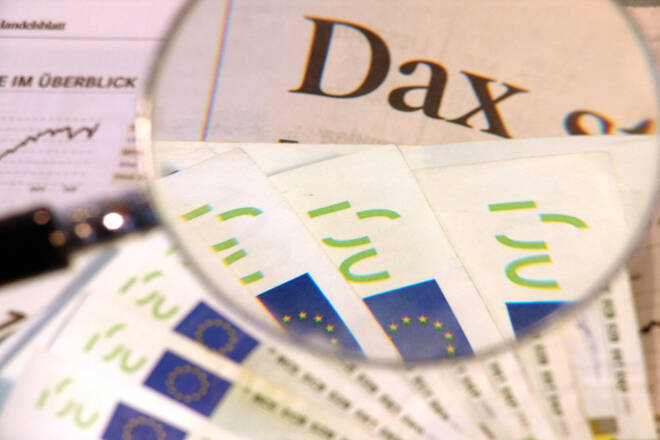Advertisement
Advertisement
DAX and a Return to 16,100 Hinged on US Debt Ceiling Updates
By:
It is a busier day for the DAX, with business and consumer sentiment and US consumer confidence in focus. Debt ceiling updates will remain the key driver.
It was a bearish start to the week for the DAX. The DAX fell by 0.20% on Monday. Partially reversing a 1.20% gain from Friday, the DAX ended the session at 15,953. Significantly, the DAX ended the day at sub-16,000 for the fourth consecutive session.
There were no euro area or US economic indicators for investors to consider. The lack of stats left US debt ceiling-related news, sentiment toward central bank monetary policy, and the economic outlook to influence.
With investors hoping for central banks to hit the pause button, euro area and US inflation numbers suggest more is needed to tame inflation. Disappointing economic indicators from the euro area and China have made the issue of bringing inflation to target more challenging.
According to the CME FedWatch Tool, the probability of a 25-basis point Fed interest rate hike in June slipped from 64.2% to 58.4% on Monday.
Reports of several Republicans planning to vote against the debt ceiling deal will also test the markets, with a vote likely as early as tomorrow.
The Market Movers
It was a mixed day for the auto sector. Continental fell by 2.06%, with Mercedes-Benz Group and Porsche seeing losses of 0.39% and 0.33%, respectively. BMW slipped by 0.06%, while Volkswagen bucked the trend, gaining 0.40%.
It was also a mixed session for the banks. Commerzbank gained 0.14%, while Deutsche Bank ended the day with a 0.53% loss.
The Day Ahead for the DAX
It is a relatively quiet day on the European economic calendar. Prelim May inflation figures from Spain will draw interest this morning. With the markets looking for inflation to soften to allow the ECB to hit the pause button, a pickup in inflationary pressure would likely test buyer appetite.
Euro area business and consumer sentiment figures will also influence. The consumer inflation expectations and selling price expectations components are likely to have more impact.
From the US, May consumer confidence figures will move the dial. Economists forecast the CB Consumer Confidence Index to fall from 101.3 to 99.0.
However, US debt ceiling-related news will remain the focal point.
DAX Technical Indicators
Resistance & Support Levels
| R1 | 16,047 | S1 | 15,892 |
| R2 | 16,141 | S2 | 15,831 |
| R3 | 16,296 | S3 | 15,676 |
The DAX has to move through the 15,986 pivot to target the First Major Resistance Level (R1) at 16,047 and the Monday high of 16,080. A return to 16,000 would send a bullish signal. However, the DAX would need economic indicators and debt ceiling talks to support a breakout.
In the case of an extended rally, the bulls will likely test the Second Major Resistance Level (R2) at 16,141. The Third Major Resistance Level (R3) sits at 16,296.
Failure to move through the pivot would leave the First Major Support Level (S1) at 15,892 in play. However, barring another risk-off-fueled sell-off, the DAX should avoid sub-15,800. The Second Major Support Level (S2) at 15,831 should limit the downside. The Third Major Support Level (S3) sits at 15,676.
Looking at the EMAs and the 4-hourly chart, the EMAs sent bullish signals. The DAX sat below the 50-day EMA (15,956). The 50-day EMA pulled away from the 100-day EMA, with the 100-day EMA widening from the 200-day EMA, delivering bullish signals.
A move through the 50-day EMA (15,956) would support a breakout from R1 (16,047) to target R2 (16,141). However, failure to move through the 50-day EMA (15,956) would leave S1 (15,892) and the 100-day EMA (15,855) in view. A move through the 50-day EMA would send a bullish signal.
The DAX Futures Sees Green
Looking at the futures markets, DAX was up 11 points, with the NASDAQ and Dow rising by 53.5 and 39.0 points, respectively.
For a look at the economic events, check out our economic calendar.
About the Author
Bob Masonauthor
With over 28 years of experience in the financial industry, Bob has worked with various global rating agencies and multinational banks. Currently he is covering currencies, commodities, alternative asset classes and global equities, focusing mostly on European and Asian markets.
Advertisement
